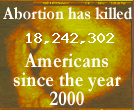Picture the White House lawn, a 17-acre triumph of petrochemical fertilizers and pesticides. Now imagine five of those acres plowed into a garden where the first family pulls weeds and harvests snow peas for photo ops — and then eats the peas for dinner.
It worked during World War II, when Eleanor Roosevelt farmed part of the first lawn, launching the Victory Garden movement that supplied 40 percent of the country's produce by the end of the war.
"This is something the next president can do. Imagine the power of that image — CNN doing a stand-up with a farm in the background," author Michael Pollan said recently at Oberlin College's Finney Chapel.
"It will send a powerful message: Ripping out the front yard is OK."
Small, sustainable farms are a part of our national security. A nation that cannot feed itself will be an easy target.
Growing our own food locally has environmental, energy, and health implications as well:
He said that if the next president doesn't make food reform a high priority, he will not be able to make headway on achieving energy independence because food production uses 20 percent of our fossil fuels.
The president will not be able to decrease greenhouse gases, slowing climate change, because food production generates one-third of greenhouse gases. And he will not be able to lower health-care costs because without reforming the food system, Americans will continue to consume cheap, unhealthful food, stay overweight and have myriad diet-related diseases.
"Since 1960, the year of my birth," Pollan said, the amount of personal income spent on food has decreased from 18 percent to 9.5 percent, while health-care costs have increased from 5 percent to 16 percent.
"Healthy calories need to be cheaper than unhealthy calories," Pollan said.
Well, we're doing our part. We're building a square foot garden. The bed is actually built, I just need to get the filling together to put inside it. After much
It's still in the 70's here in Houston, and we are planting lettuce, spinach, kale, rutabagas, rhubarb, and radishes. We started a compost pile last month for our science class, but that's not ready... yet.
I've successfully grown spinach and lettuce in four different states, but I've never tried the others!
This book is a fascinating look at the animals that do the dirty work of composting. Great pictures of microscopic bugs, plus easy to understand text, made this book perfect for our school of K-3rd graders.

Labels: black thumb, education, In The News








